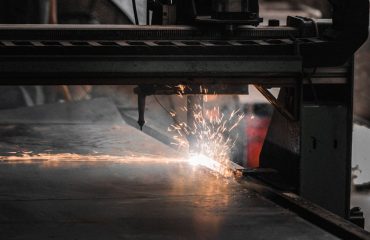body { font-family: sans-serif; line-height: 1.6; }
h1, h2, h3 { color: #333; }
p { margin-bottom: 1em; }
ul { list-style-type: disc; margin-left: 20px; }
The fluctuating nature of the steel market presents a significant challenge for businesses relying on this essential material. Choosing between spot and long-term steel contracts is a crucial decision that can significantly impact your profitability and operational efficiency. This comprehensive guide will dissect the pros and cons of each approach, helping you determine the best strategy for your specific needs.
Understanding Spot Steel Contracts: Riding the Market Waves
Spot contracts involve purchasing steel on the open market at the prevailing price. This approach offers flexibility and responsiveness to immediate needs. You buy what you need, when you need it, without the commitment of a long-term agreement. However, this flexibility comes at a cost. Spot prices are subject to significant volatility, influenced by factors like global supply and demand, raw material costs, and geopolitical events. This price fluctuation can make budgeting and long-term planning challenging.
Advantages of Spot Contracts:
- Flexibility: Adapt to changing project requirements and demand fluctuations.
- No long-term commitment: Avoid potential losses due to unforeseen market downturns.
- Potential for lower prices: If market prices fall, you benefit from lower acquisition costs.
Disadvantages of Spot Contracts:
- Price volatility: Exposure to unpredictable price swings can severely impact profitability.
- Supply chain risks: Securing sufficient quantities of steel can be challenging during periods of high demand.
- Increased administrative burden: Requires constant market monitoring and frequent negotiation of contracts.
Long-Term Steel Contracts: Securing Stability and Predictability
Long-term steel contracts offer a different approach, providing price stability and supply security over an extended period. These contracts typically lock in a predetermined price for a specific quantity of steel over a defined timeframe, often ranging from several months to several years. This predictability allows for better budgeting, streamlined production planning, and reduced risk associated with price fluctuations.
Advantages of Long-Term Contracts:
- Price stability: Predictable pricing reduces financial uncertainty and simplifies budgeting.
- Guaranteed supply: Secures a consistent supply of steel, mitigating supply chain disruptions.
- Improved relationships with suppliers: Establishes stronger partnerships with reliable steel providers.
Disadvantages of Long-Term Contracts:
- Price risk: If market prices fall significantly, you might miss out on potential savings.
- Lack of flexibility: Adjusting to changing project needs or demand fluctuations can be difficult.
- Potential for contract breaches: Requires careful contract negotiation and risk management.
Analyzing Your Business Needs: The Key to Choosing the Right Contract
The optimal choice between spot and long-term steel contracts depends heavily on your specific business needs and risk tolerance. Consider these factors:
- Project size and duration: Large, long-term projects benefit from the stability of long-term contracts. Smaller, short-term projects might find spot contracts more suitable.
- Inventory management capabilities: Businesses with robust inventory management systems can better absorb price fluctuations associated with spot contracts.
- Risk tolerance: Businesses with a higher risk tolerance might favor spot contracts for potential cost savings, while risk-averse businesses might prefer the stability of long-term contracts.
- Market conditions: The current state of the steel market significantly influences the decision. A volatile market might favor long-term contracts, while a stable market might make spot contracts more attractive.
Negotiating Favorable Terms: Tips for Both Spot and Long-Term Contracts
Regardless of your chosen contract type, effective negotiation is crucial. For spot contracts, focus on securing competitive pricing and reliable delivery. For long-term contracts, negotiate favorable pricing, payment terms, and provisions for adjusting quantities or prices under specific circumstances. Thoroughly review the contract terms, ensuring clarity on all aspects, including delivery schedules, quality specifications, and dispute resolution mechanisms.
Consider involving legal counsel to review complex contracts and ensure your interests are protected. Building strong relationships with your steel suppliers is also vital, regardless of the contract type. Open communication and collaboration can lead to more favorable terms and a smoother procurement process.
Hedging Your Bets: Strategies for Mitigating Risk
Minimizing the risks associated with both spot and long-term contracts requires a proactive approach. For spot contracts, consider diversifying your suppliers and closely monitoring market trends. For long-term contracts, include clauses that allow for price adjustments based on predefined market indices or other objective criteria. Exploring hedging strategies, such as using financial instruments like futures contracts, can further mitigate price risks associated with both contract types.
Careful planning, thorough research, and effective negotiation are crucial for successful steel procurement. By understanding the nuances of spot and long-term contracts and implementing appropriate risk management strategies, businesses can ensure a steady supply of high-quality steel at a competitive price.
Tags: spot steel contracts, long-term steel contracts, steel procurement, steel pricing, steel supply chain




